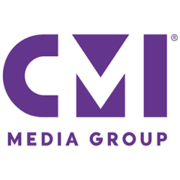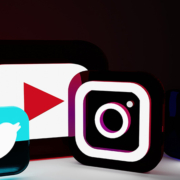Just right tech for effective pharma customer service
Just right tech for effective pharma customer service
By Jeff Bromley, Thingee Corp.
The late twentieth and early twenty-first centuries have been the arena where a continuing evolution of computer-based automated business communications systems has taken place. Once telephones and computers became linked in the 1980s, almost all communications systems became software driven. While there were obvious benefits to companies in terms of the low cost and efficiency of these systems and the time they saved employees, the net result was that the quality of customer service over time has deteriorated. Some systems are over-complicated mazes with too many options to choose from. Long wait times are common. Some systems even seem to try to prevent their users from speaking to an operator.
The newest chapter in this evolution has culminated most recently in the explosion of artificial intelligence (AI) algorithms that have been applied to handle routine business communication tasks. In a relatively brief period of time, AI-based chatbots appear to be everywhere.
But while these algorithms excel at handling, for example, repetitive tasks with minimal errors and efficiently analyzing large quantities of data, they are still unable to do the basic problem-solving human customers often require.
In a recent 2024 consumer survey on the use of artificial intelligence in customer services experiences found that 81 percent of respondents still preferred to wait for a live agent rather than choosing to engage immediately with an AI assistant.1 They also rated live agents better than AI systems at helping to solve complex problems and resolving issues in a single session.
So while communication technologies have advanced by leaps and bounds in sophistication and complexity, the fundamental need underlying these systems remains the same – sometimes a person needs to talk immediately and directly to another human being. Especially a knowledgeable human being who understands and can help resolve a customer’s problems.
Businesses are already succeeding by using a blended approach that integrates a mix of older and newer technologies, creating a kind of “Goldilocks zone” of optimal customer service. Older customer contact systems like interactive voice response are being updated and retrofitted to be more user friendly. Other AI-based tools are being adopted for whatever specific purposes they are best suited for: chatbots, image and music generation, coding, research, etc. Human agents are then free to be focused on business areas where they excel and bring the most value: problem solving and relationship building.
The pharmaceutical industry provides a good example of where this mixed approach can be adopted with success. Pharmaceutical teams are composed of highly trained individuals who form direct and often long-lasting relationships with their healthcare clients. They perform a high-value function when building and maintaining these relationships. In a blended technology scenario, AI-based systems can be deployed for routine, data-related tasks such as providing accurate, up-to-date information on drug interactions, clinical trial data, and regulatory updates, while reps can focus on expediting the drug adoption process or troubleshooting any other related problems a healthcare professional (HCP) may be experiencing, creating a VIP effect that benefits both the company and the customer.
Simple technologies can be highly effective in supporting these valuable pharmaceutical rep and HCP relationships. An example is an app based on Amazon’s Dash button technology updated for use on iPhone and Android phones. Created originally as a personalized shortcut for reordering products, the technology has been repurposed to serve as a personal connection technology between reps and their clients. The app provides a direct and immediate communication link when necessary, saving time when quick responses could be critical to successful patient outcomes.
The following are many other areas where this type of technology could be used effectively.
- Doctor access in hard-to-reach territories: Ensuring that HCPs in remote areas can easily access information and support without lengthy wait times or complicated processes
- Simplified sample or product ordering: Giving HCPs and their staff a quick and efficient way to order samples or buy and bill products
- Clinical trials: Streamlining communication between trial participants and coordinators, ensuring timely updates, and resolving issues quickly
- Prior authorization: Assisting HCPs in navigating the complexities of prior authorization and ensuring that necessary approvals are obtained without needless delays
- Product launch: Supporting reps with up-to-date information and tools to effectively communicate new product benefits and usage to HCPs
Communications technologies ultimately should be chosen for their appropriateness and effectiveness at executing a given task, not because they are the latest, greatest novelty, no matter how impressive they may seem. Long-term business success comes from a blended approach, combining the best qualities of newer technologies like AI with those that enhance the fundamental relationship-building and problem-solving skills of human agents. By leveraging the strengths of both, companies can create a customer service experience that is efficient, responsive, and maintains the human touch.
Reference
- (2024). AI in Customer Service. Presentation.
 |
Jeff Bromley is a partner and technologist with Thingee Corporation. |












